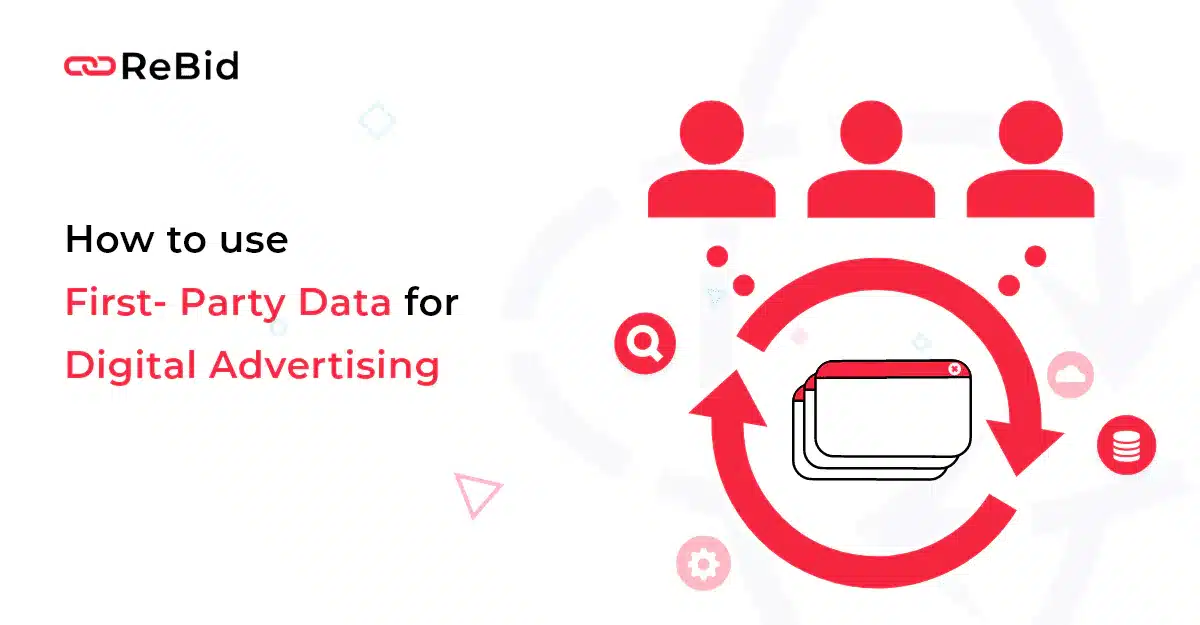With Google announcing to cease the use of Third Party Cookies, companies need to change their digital marketing strategies. The real good news is that it’s not a problem as First-part data will only enhance digital ad targeting.
Let’s take a beat and learn what First-party Data is and how it can be used for digital advertising?
In simpleton’s words, data that is collected by the company from their primary sources like email subscribers, website tracking tools, or web or mobile behaviour is First-Party Data. A company has various primary sources online and offline including the website, CRM, surveys and it contains important information like people’s website interaction, time spent on the website or app, locations, and even interest. Also, known as 1P data, and on the bright side, if the First-party data is used correctly, it can mitigate the need of using secondary data or third-party data.
In this blog, let’s talk about what you need to know about the asset called First-part data and how it can improve your business.
Different ways in which first-party data can enhance your digital advertising
1. Improve target precision
Our ultimate goal is to enhance ROI, and it is possible with improved target precision. Imagine a scenario where there is no Ad clutter due to cookie-based strategies. It leads to enhanced addressability, which highly targets efficient, accurate, and relevant to your business. For example, say if a consumer searched for a pair of stilettos on his mobile and later bought it using his laptop. Even though the lead is converted, the consumer keeps seeing Ads on his mobile, which is a waste of targeted Ads and money invested.
It is one of the reasons why 87% of APAC brands find first-party data crucial for their business. As the first-party data is owned by the company, is free and taken by consent of the targeted audience, companies can use it to send customised messages. The State of the Connected Consumer report by Salesforce, reveals that 65% of APAC consumers believe that companies lack transparency on the usage of data and the remaining 45% are concerned about data security. With the change in Google Policy, every company will now tighten security.
2. Advance Omni-channel Measurement
Our customers leave a trail of their journey, i.e., we can know how our customers reached us and which platforms they are using. A customer may have seen our brand on Facebook and then clicked on the Ad then landed on the website, or he might have searched about a product on Google, stumbled upon the Ad on YouTube, watched the video, and then booked the product. These trails tell us the client’s interests and journey, helping develop a business strategy.
Having said that, it’s incomplete if we can’t integrate the multiple channels or platforms where our Ads are displayed, then we won’t have a holistic view. Omni-channel measurement allows the analysts and marketers to review the channels with maximum traffic, analyse the consumer’s buyer psychology and purchase pattern. Integrated data will give a broader outlook, and accordingly, marketing strategies will be designed and tested.
ReBid offers omni-channel reporting and campaign activation. Why don’t you take a demo to see how.
3. Map the Customer Journey
Gone are the days when it was a task to find our targeted customers. We can map our client’s footprint on social media and the internet as stated earlier. Each customer has become an identity asset. By analysing the steps a customer takes to finally make the purchase, we can understand what stops them from making a purchase right from the mobile (if they purchased using a laptop) or from social media platforms like Facebook or Instagram (why they felt the need to visit a website). These steps will help examine the information shared on our channels and whether there’s a need to upgrade or change together.
The goal is to make the road to converting the lead easy and quick; with minimum steps, the chances of the lead dropping out. Our job is to develop marketing strategies and funnels that invoke interest and lead conversion within the shortest possible time.
4. Test the Data
The best thing about the first-party data is that it isn’t tested or used by any other company. It is Fresh, Raw, and Untested, an opportunity to tap into an entirely new audience segment or uncover new opportunities. The third-party data has a high competition rate as everyone from competitors to start-ups uses it. On the contrary, the first-party data makes marketing personalised, and these strategies can be tested on a small focussed group to interpret the results. Thus, investing in marketing becomes a clearly forecasted and planned strategic decision with intact goals and deadlines in place; instead of a gamble.
Conclusion
The expiration of third-party data may come as a shock or a disappointment, but it’s a blessing in disguise. If you are a visionary, metaphorically speaking, first-party data will be the uncut version of a movie that has completed filming but hasn’t been released. It’s your free will to use the untapped resource and leverage the power of this top-notch data. And the real best part is it is free of cost, accurate, and will aid in creating unique strategies that will yield interest only for you.
The research conducted by Boston Consulting Group shows that first-party data users gain competitors’ advantage with increased marketing efficiency, resulting in double the revenue with a single targeted Ad Placement.
Lastly, even though first-party data is an asset or unleveraged opportunity, don’t forget to seek permission from your loyal customers before gathering their information (we don’t want to be not compliant with data laws of course.)





